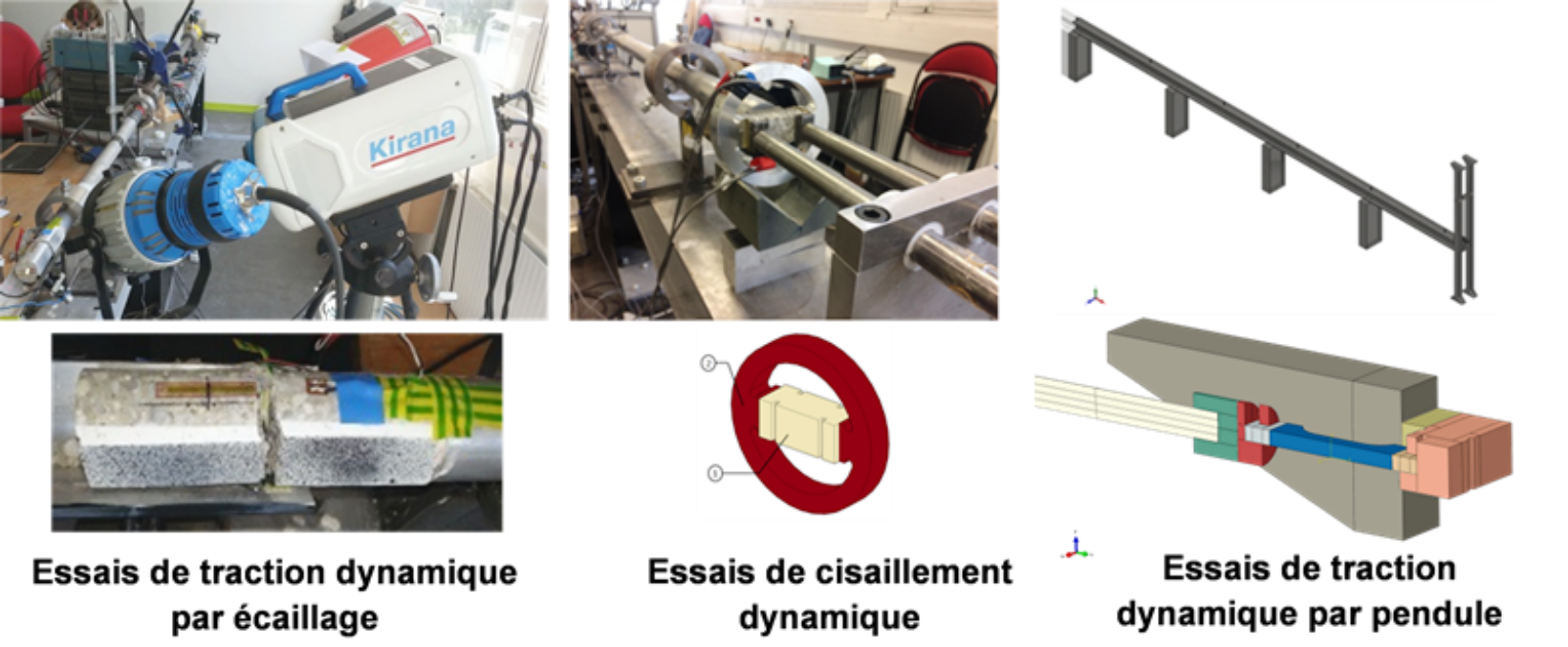- Share
- Share on Facebook
- Share on X
- Share on LinkedIn

Keywords: Concretes, Rocks, Ceramics, Composites, Polymers, Dynamic behaviour, Hopkinson bars, Full-field measurements, Micromechanical modelling, Discrete-element method
The RV division is developing advanced dynamic testing methods based on high-speed hydraulic jack (6 m/s, 300 kN), Hopkinson bars and plate impact gas launcher (D80-120 mm, 1000 m/s; Brittle’s CODEX chair) to characterize the behaviour of materials over a wide range of strain rates (1 s-1 - 1E5 s-1). The instrumentation used consists in laser interferometers and ultra-high speed cameras for performing full-field measurements (DIC or grid method) or direct visualization. These experimental data feed the constitutive models used in numerical codes. On a numerical point of
view, RV is developing two approaches in parallel:
- The discrete-element method (DEM), which offers obvious advantages in terms of representation of discontinuities (cracking, fragmentation)
- The finite-element method (FEM) integrating nonlinear phenomena associated with damage processes in brittle materials
These activities are carried out by implementing innovative methods and tools:
- in experimentation: mechanical characterization tests on a wide range of loading speeds coupled with ultra-high speed imaging instruments and kinematic field measurements (DIC, grid, interferometry) (ExperDYN platform), mechanical tests on structures (DESSIS test platform), mechanical tests under deviatoric stresses (GIGA / BCR3D) and high temperature tests.
- in numerical modeling: multi-physical approaches, discrete (DEM ) and continuous (FEM) approaches at mesoscopic and structure scales, propagation of uncertainties at different scales.
Involved researchers
- Share
- Share on Facebook
- Share on X
- Share on LinkedIn